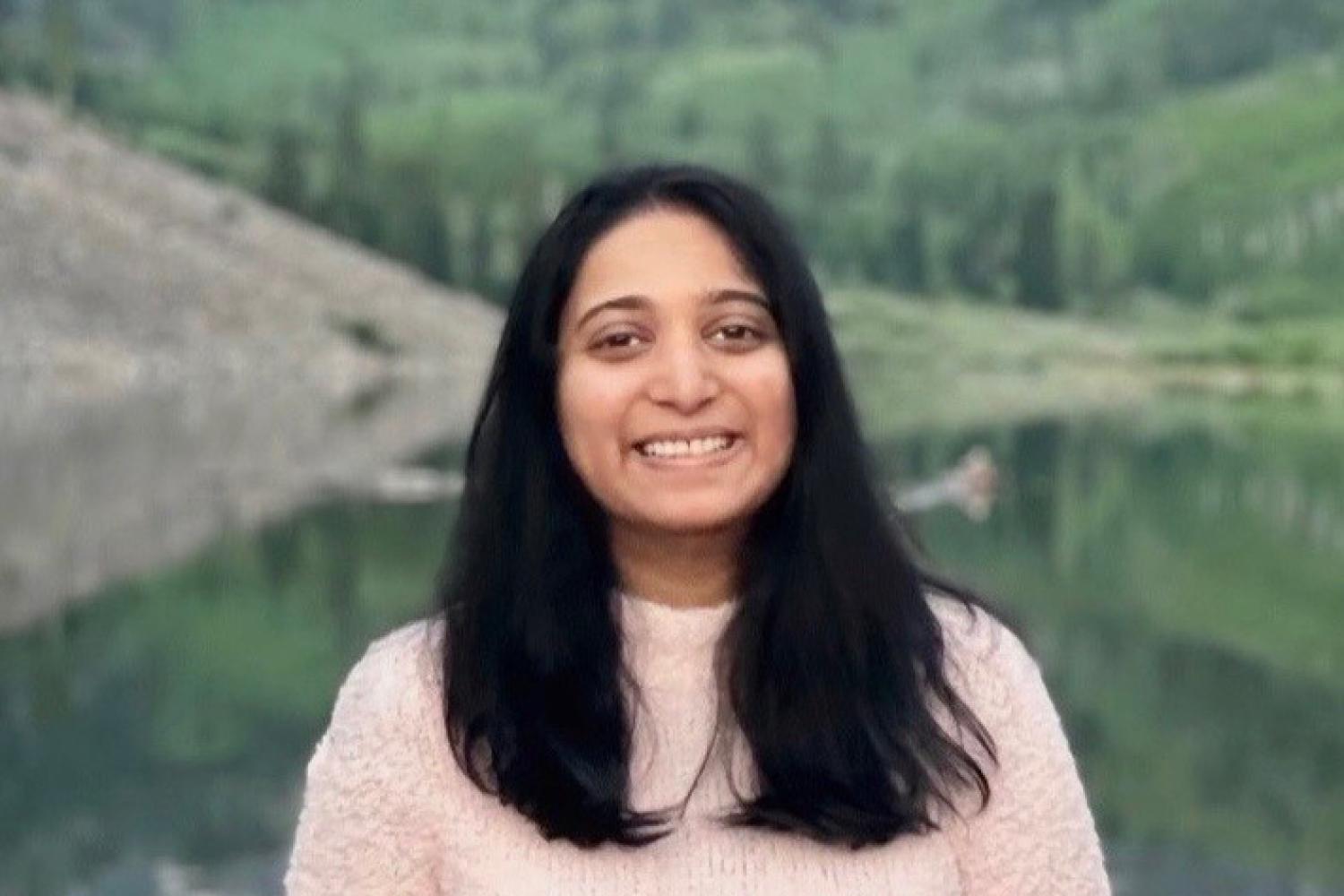PhD student headed to Antarctica to conduct climate research with lasers

Above: Arunima Prakash
Header Image: A lidar beam shooting into the night sky from Xinzhao Chu's lab in Antarctica.
Arunima Prakash is preparing to study the upper atmosphere from one of the coldest and most desolate places on Earth: Antarctica.
Prakash, an aerospace PhD student at the University of Colorado Boulder, is studying polar mesospheric clouds and their relation to the solar cycle and polar vortex effects.
“There has been a long debate about how the solar cycle affects these clouds,” Prakash said. “Past satellite observations say the sun had a dominant effect, but we’re not seeing that correlation anymore. We want to study why. It could be a long-term indicator of climate change.”
Prakash is part of a team working under Xinzhao Chu, a professor in the Ann and H.J. Smead Department of Aerospace Engineering Sciences at CU Boulder. Chu has a dedicated facility located at McMurdo Station, Antarctica. There, she uses specialized lidar systems that shoot pulsed laser beams into the sky to observe conditions from roughly 10-200 km (6-124 miles) in altitude, where terrestrial weather and space weather processes influence each other.
The frozen tundra of Antarctica may seem an unlikely place to conduct complex space-atmospheric research, but the unique atmospheric conditions available only at extreme latitudes make the location perfect for these studies.
Prakash’s work was recognized at the 2022 International Laser Radar Conference for best student oral presentation and earned second place in the student poster competition at the Coupling, Energetics and Dynamics of Atmospheric Regions Program workshop in June.
Her work thus far has only been through complex analyses of already collected data. So she is eager to get to Antarctica to do her own hands-on research.
She is part of a team that will depart from Boulder for Antarctica within the next few weeks. Although Chu’s lab is well established at McMurdo, the facility has sat unused for the last two years due to the COVID-19 pandemic.
Prakash said the team is uncertain what they will find once they are on site.
“We are preparing for the worst,” Prakash said. “You generally want lasers to be continuously running, but these have been off for two years. We don’t know what kind of problems we’ll face and are gathering all sorts of extra parts to bring.”
Although it would be ideal if everything works fine, Prakash is also excited about the potential for diagnosing and solving electronics problems.
“For my degree, I didn’t want to be in one hole doing just one thing,” she said. “With Dr. Chu, I have the chance to work on science and engineering. We do a lot of electronics, lasers, photonics, optics, and data analysis. It’s a very good chance to learn more and keep in touch with what I know.”
Prakash plans to stay at the lab in Antarctica for six months. Once the equipment there is up and running, she will have near uninterrupted opportunities to conduct her research.
“Being in Antarctica I will have absolutely no distractions in terms of productivity,” Prakash said. “I’m looking forward to it as much as I’m looking forward to seeing the auroras, and the stars, and improving these atmospheric models.”

